What will you find in this article?
What is the Autoimmune Protocol Diet (also called the Autoimmune Paleo Protocol)?
The autoimmune paleo protocol is a healing diet designed to remove foods potentially causing immune reactivity, gut irritation and inflammation, and to add in nutrient dense and anti-inflammatory foods. The aim of the protocol is to heal from autoimmune disease, or to better manage symptoms of autoimmune disease.
Nutrient-dense foods are focused upon to correct micronutrient deficiencies and provide the body with the nutrition it needs to heal.
Who Developed the Autoimmune Protocol?
The paleo autoimmune protocol (AIP) started with Dr Loren Cordain, a scientist who discovered that certain foods could sometimes trigger inflammation in people with autoimmune disease (dairy, eggs, nightshades, nuts and seeds).
Robb Wolf outlined the AIP in his book The Paleo Diet introducing it as an elimination diet (you eliminate certain foods for 30 days and then reintroduce them one at a time, to test your body for food intolerance.)
Then Dr. Sarah Ballantyne came on the scene, aka The Paleo Mom. As a scientist with autoimmunity, she was very interested in the autoimmune protocol. She delved into the research and wrote The Paleo Approach. Sarah Ballantyne is now the leading expert on the autoimmune protocol.
What Causes Autoimmune Disease?
An autoimmune disease is a condition arising from an abnormal immune response to a normal body part. There are at least 80 types of autoimmune diseases. Nearly any body part can be involved.
All autoimmune diseases are characterized by an overactive immune system, which leads to chronic inflammation and tissue destruction. Genetics play a role in the development of autoimmune disease but diet & lifestyle likely play an even bigger role.
The cause of autoimmune conditions is not fully understood. Some people have a genetic susceptibility but the steep increase in autoimmune conditions suggests environmental factors are the driving force. These factors include the modern Western diet, nutrient deficiencies, chronic stress, changes in the gut microbiota, environmental toxins, sleep deprivation, vitamin D deficiency and reduced sun exposure.
The Autoimmune Protocol (AIP) aims to address these issues. The nutrition part of this protocol takes a three-pronged approach:
- Reduce inflammation by removing inflammatory foods from the diet
- Correct nutrient deficiencies by adding in nutrient-dense foods and some targeted supplements
- Improve the gut and the gut microbiota with gut healing foods and probiotics or fermented foods
It is also important to make lifestyle changes to address some of the other potential contributing factors to the disease such as chronic stress and/or sleep deprivation.
Check out my comprehensive 6 Week Autoimmune Protocol – The Autoimmune Remedy which you get as part of my Revitalise Programme for only £27!
Intestinal Permeability (Leaky Gut) and Autoimmune Disease
Some researchers are suggesting that at the root cause of virtually all autoimmune diseases is intestinal permeability or leaky gut (Leaky Gut As a Danger Signal for Autoimmune Diseases). This literally means someone has developed tiny holes in their gut lining.
Healing the gut lining is therefore the key to healing from autoimmune disease. A leaky gut allows particles of food, bacteria and other things through the gut and into the bloodstream and triggers the immune system to mount a response. By sealing up the holes in your gut wall your immune system can finally stop producing inflammation and return to functioning normally again.
When the gut has healed and inflammation has calmed autoimmune diseases can go into remission and you may be able to heal your autoimmune disease without the need for a lifelong medication.
Modern medicine prescribes drugs for autoimmune diseases, which are either anti-inflammatory drugs or immune suppressing drugs. Suppressing the immune system carries risks – it leaves you open to a host of other illnesses and infections. It also makes no sense to prescribe anti-inflammatory drugs but not to prescribe an anti-inflammatory diet! Why then do most doctors not mention the importance of diet to their patients?
What Can I Eat on the Autoimmune Protocol Diet?
First thing’s first – let’s talk about what we can include on the autoimmune protocol. You should focus on foods that are nutrient dense and those that will heal your gut.

Nutrient dense foods that will form the basis of your diet on the autoimmune protocol include:
- Grass fed meat – all types
- Fish – all types
- Seafood – all types
- Organ meats
- Vegetables (with some exceptions)
- Fruits
- Fresh herbs and some spices
- Tiger nuts (not actually a nut but a tuber)
- Coconut and coconut products
- Olives and olive oil
- Healthy fats
- Bone broth
- Fermented foods
- Gelatin
- Black tea, rooibos tea and herbal tea
125ml – 250ml of bone broth should be consumed daily.
You should aim for two portions of organ meat per week and two portions of omega-3 rich fish (salmon, mackerel, anchovies, sardines, herring) per week. This will give you anti-inflammatory omega-3 fats, vitamin D and a good base level of micronutrients.
You should aim for 2-3 types of vegetables at every meal including plenty of dark green leafy vegetables such as kale, Cavolo Nero, Spring greens, Savoy cabbage, watercress and rocket.
Consume plenty of extra-virgin olive oil for healthy anti-inflammatory fats. You can also use coconut oil, MCT oil, beef dripping, duck fat and goose fat.
Will I Be Hungry on the Autoimmune Protocol Diet?
This is not a diet in the usual sense of the word. You should not feel hungry while doing AIP – you need to eat plenty of food. The aim of the protocol is to heal your body. You need to be nourishing your body and you need lots of nutrients for healing.
You should eat 3 to 4 meals each day and aim to eat enough at mealtimes that you are not hungry in between. Try to avoid snacking.
A Simple Meal Plan for the Autoimmune Protocol
I have developed a two-week Autoimmune Protocol diet plan that is also low in FODMAPs. It includes all the recipes. Please see below for more information on FODMAPs. You can download this meal plan by clicking here: Low FODMAP Autoimmune Protocol Recipes
Additional Ideas for AIP Meals, Drinks & Snacks
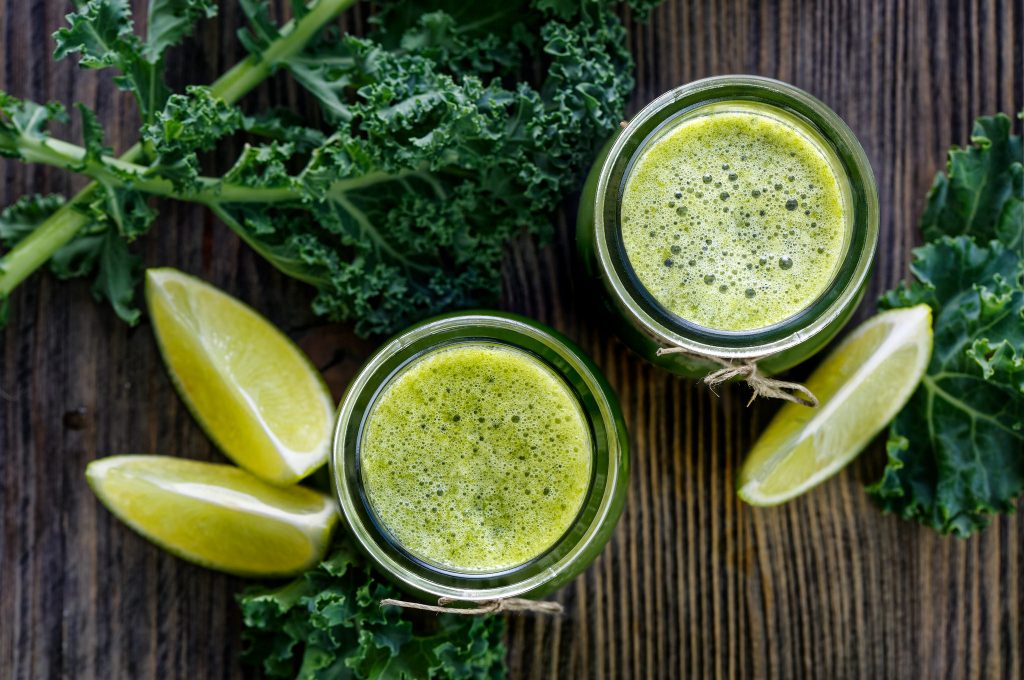
Hot Drinks:
- Ginger & turmeric tea with fresh lemon & honey
- Black tea with gelatin
- Rooibos tea with gelatin
- Molasses blended with hot water ground ginger, cinnamon & coconut or MCT oil
- Turmeric latte
- Bone broth
Breakfast (aim to include some vegetables):
- Sausages or bacon with sweet potato and kale hash
- Tigernut granola with coconut or tigernut milk
- Coconut yogurt with berries
- Butternut squash or parsnip breakfast porridge
- Smoothie or smoothie bowl with greens or berries & coconut oil/coconut milk
- Stewed healing apples with coconut yogurt
- AIP plantain pancakes
- Rosti made with sweet potato/beetroot/celeriac or parsnip & topped with bacon
Lunch (aim to include 3-4 types of vegetables):

- Vegetable or chicken soup made with bone broth
- Salad with cold meat or fish (chicken, tuna, smoked salmon etc.), avocado, olives and extra-virgin olive oil dressing
- Pate with grain-free crackers
- Baked squash or sweet potatoes with salad
- Carrot or cauliflower couscous with vegetables and fresh herbs
Dinner (aim to include 3-4 types of vegetables):

- Beef, pork, chicken or lamb stew with root vegetable mash
- Lamb shepherds pie topped with cauliflower or parsnip mash
- Roast chicken with roasted vegetables
- Herb-crusted salmon with vegetables
- Prawns with courgette spaghetti & homemade basil pesto
- Cod with celeriac chips & greens
- Sausage “pasta” made with butternut squash pasta
- Burgers with avocado & bacon and sweet potato chips
- Celeriac “Carbonara”
- Crispy pork belly with homemade apple sauce & carrot and swede mash
- Rack of lamb with homemade mint sauce and roast parsnips
- Fresh tuna steaks with salsa verde and vegetables
- Moules & frites (with parsnip chips)
- AIP chicken curry
- Sausage & mash with AIP gravy (have mashed squash, parsnip, sweet potato etc.)
- Duck confit with wilted greens
- Meat and vegetable kebabs with salad
Dessert: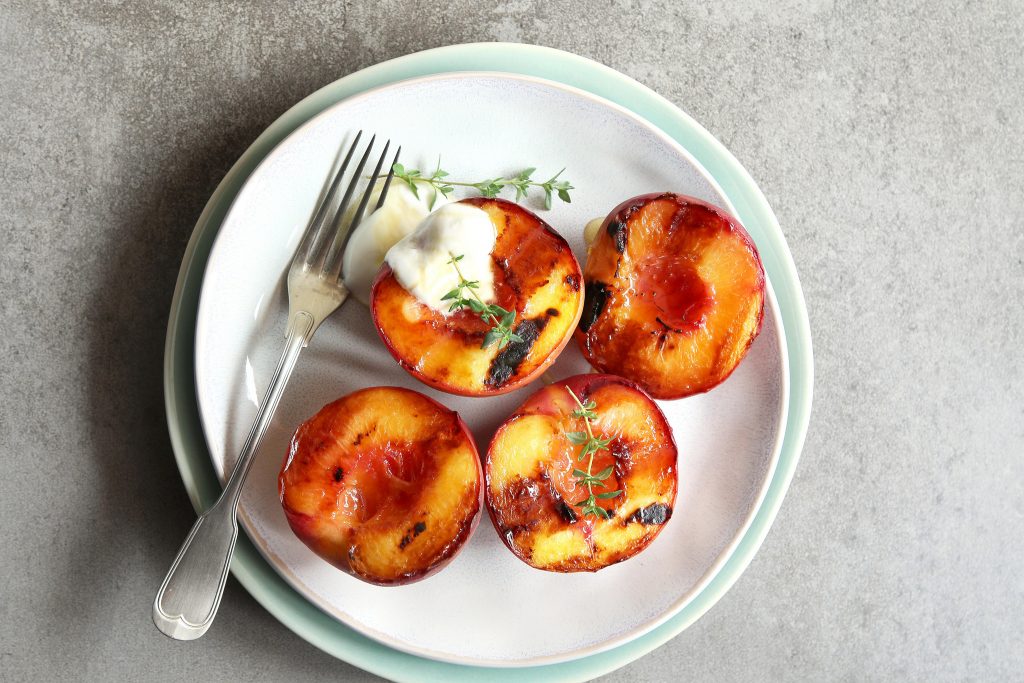
- Stewed apples with coconut milk
- Stewed rhubarb with coconut yogurt/milk
- Fruit crumble – topping made with tigernut flour, desiccated coconut, coconut oil/butter, dates
- Caramelized bananas
- Baked fruit with whipped coconut cream
Snacks:
- Homemade kale crisps
- Awfully Posh gluten-free pork crackling (simply pork + salt)
- Coconut flakes
- Tiger nuts
- Coconut yogurt
- Olives
- Berries – blueberries, strawberries, raspberries
- Gelatin gummies
- Plantain chips
- Carrot & cucumber sticks
Check out my comprehensive 6 Week Autoimmune Protocol – The Autoimmune Remedy which you get as part of my Revitalise Programme for only £27!
Which Foods Should I Avoid on the Autoimmune Protocol Diet?
Foods to eliminate:
- Grains & pseudo-grains
- Dairy (use coconut products instead)
- Vegetable oils (use olive oil instead)
- Beans & pulses
- Refined sugar
The above foods are the same that are excluded from the paleo diet. In addition the autoimmune protocol removes the following foods for at least 30 days:
- Eggs
- Alcohol
- Chocolate (use carob instead)
- Nuts & seeds (use tigernuts instead)
- Coffee (drink black or rooibos tea instead)
- Nightshade vegetables – white potatoes, aubergine, tomatoes, peppers, goji berries, chillies, cayenne, paprika
Slow and Steady or Full Elimination?
There are two ways to approach the autoimmune protocol. You can do a slow and steady phased elimination followed by a maintenance phase, or you can go straight to the full elimination diet and then reintroduce once your symptoms are under control. The second approach is quicker but is not right for everyone.
Do I Need to Follow the Autoimmune Protocol Forever?
No! The goal of the diet is to allow the body to heal with the aim of eating the widest possible variety of foods in the future. The aim is to get your symptoms under control and then slowly reintroduce foods to arrive at a diet which you can follow long-term without experiencing symptoms of your disease.
Does the Autoimmune Protocol Really Work?
The internet is full of anecdotal accounts of people putting their autoimmune diseases into remission with the autoimmune diet. The reported effectiveness of the protocol is one of the reasons it has become so widely known.
There is also a small amount of scientific research to back up the efficacy of the protocol.
A study published in 2017 ( Efficacy of the Autoimmune Protocol Diet for Inflammatory Bowel Disease) put the Autoimmune Protocol to the test in patients with inflammatory bowel disease (Crohn’s Disease and Ulcerative Colitis) and the results were very favourable.
15 patients were enrolled that had active IBD and had been living with IBD for an average of 19 years.
Clinical remission was achieved by week 6 by 73% of study participants. This study suggests that the autoimmune protocol can be used as an effective treatment in many patients with IBD and that remission occurs quite rapidly.
Dr Terry Wahls’ Research
Dr. Terry Wahls is a clinical professor of medicine at the University of Iowa. She is also a patient with secondary progressive multiple sclerosis (MS), which confined her to a tilt-recline wheelchair for four years.
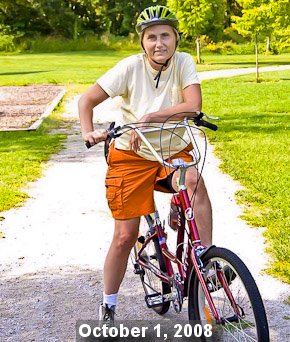
Dr. Wahls restored her health using a diet and lifestyle program she designed specifically for her brain. She is the author of The Wahls Protocol: How I Beat Progressive MS Using Paleo Principles and Functional Medicine
She conducts clinical trials that test the effect of nutrition and lifestyle interventions to treat MS and other progressive health problems.
Terry Wahls’ team published a paper in 2017 (Randomized control trial evaluation of a modified Paleolithic dietary intervention in the treatment of relapsing-remitting multiple sclerosis: a pilot study) which concluded: A paleolithic diet may be useful in the treatment and management of Multiple Sclerosis, by reducing perceived fatigue, increasing mental and physical quality of life, increasing exercise capacity, and improving hand and leg function. By increasing vitamin K serum levels, the Modified Paleo Dietary Intervention (MDPI) may also reduce inflammation.
Should I Combine the Autoimmune Diet with the Low-FODMAP Diet?
For most people the AIP is strict enough and I would not recommend combining it with any other diet. Some people however, particularly those with digestive issues, IBS or IBD may find that they react negatively to certain fruits and vegetables as well as coconut products.
Some fruits, vegetables and coconuts contain compounds called FODMAPs (which stands for Fermentable Oligosaccharides, Disaccharides, Monosaccharides And Polyols), which are hard to digest short chain carbohydrates that are poorly absorbed in the small intestine.
In some people, eating FODMAPs results in abdominal pain and bloating.
There is a decent amount of research showing that following a low-FODMAP diet can help improve symptoms in those suffering from IBS and IBD. (Low-FODMAP diet reduces irritable bowel symptoms in patients with inflammatory bowel disease https://www.ncbi.nlm.nih.gov/pmc/articles/PMC5434443/ )
Combining the Autoimmune Protocol with the low-FODMAP diet makes it even more restrictive, so should only be done for a short period of time under the guidance of a qualified specialist. You need to be very careful when following a more restricted form of the Autoimmune Protocol that you do not become deficient in nutrients.
20 Lowest FODMAP Vegetables Suitable for AIP – You Should Be Able to Eat These Freely. If you are really sensitive then eat these cooked instead of raw to begin with

- Carrots
- Cucumber
- Lettuce – all types
- Rocket
- Watercress
- Radish
- Olives
- Courgette
- Endive Leaves
- Swiss Chard
- Spring Greens
- Green beans
- Kale
- Spinach
- Parsnip
- Kabocha Squash
- Celeriac
- Beansprouts
- Spring Onions *green part only NOT the white bulb
- Chives
- Ginger
- Fresh herbs – mint, parsley, basil, coriander, rosemary, thyme, sage
Medium FODMAP Vegetables Suitable for AIP – you can eat these but be careful of portion size
- Sweet Potatoes – stick to half a potato at one time
- Avocado – stick to ¼ at a time
- Butternut squash – stick to ¼ at a time
- Spaghetti Squash
- Swede
- Turnip
- Pickled Beetroot
Low FODMAP Fruits – stick to 2 portions of fruit per day
- Blueberries – 20 blueberries = a portion
- Raspberries – 10 raspberries = a portion
- Strawberries – 10 strawberries = a portion
**Note: Blackberries and cherries are HIGH in FODMAPs so avoid these
- Banana – 1 medium = a portion
- Cantaloupe & Honeydew Melon (but NOT watermelon) – ½ cup measure = a portion
- Kiwi Fruit – 1 fruit = a portion
- Mandarin/Satsumas/Clementine – 1 fruit = a portion
- Oranges – 1 fruit = a portion
- Lemons
- Limes
High FODMAP Vegetables – Avoid these while following the low-FODMAP Diet
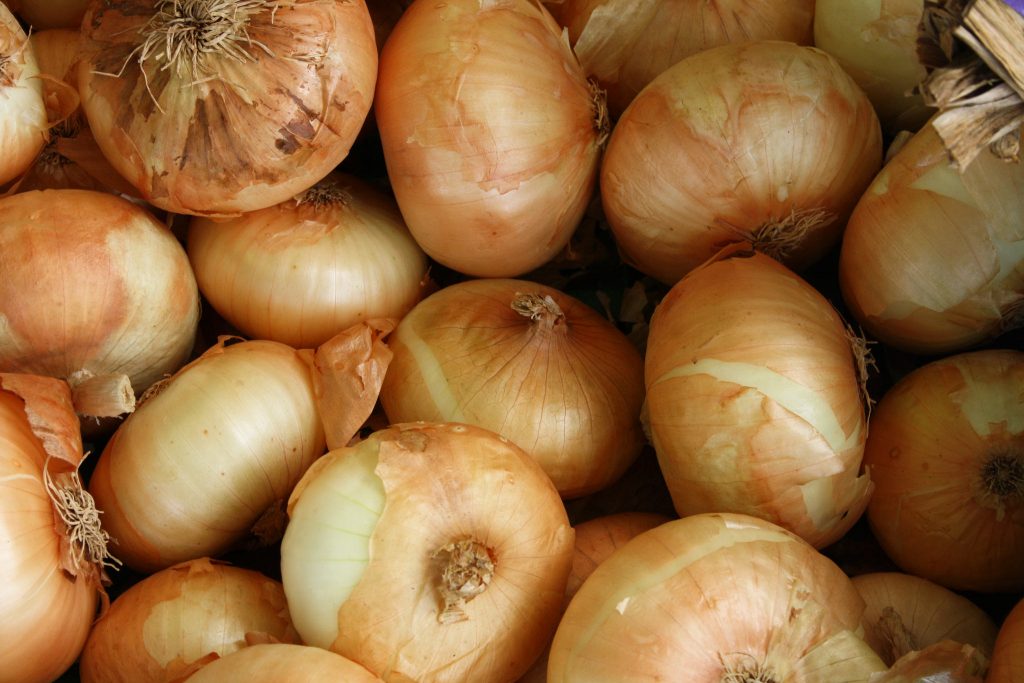
- Onions
- Garlic ***to flavour foods you can use a good quality garlic infused olive oil which will not contain FODMAPs
- Shallots
- Leeks
- Jerusalem artichokes
- Asparagus
- Broccoli
- Cauliflower
- Brussels Sprouts
- Cabbage
High FODMAP Fruits – Avoid these while following the low-FODMAP Diet
- Apples ***see note on Stewed Apples below
- Pears
- Blackberries
- Cherries
- Plums
- Peaches
- Nectarines
- Watermelon
- Apricots
- All dried fruit
Is Following the Autoimmune Protocol Really Necessary?
The Autoimmune Protocol is restrictive and can be hard to follow. For some people it is not necessary. However, in 4 years of helping people implement the standard paleo diet I can honestly say that straight paleo is not enough for some people (especially those with autoimmune conditions and IBS/IBD) to see improvements.
As mentioned above there are two ways in which to approach the AIP: if you struggle with the idea of such a restrictive diet you could try a phased elimination. Start by eliminating gluten, then after a couple of weeks eliminate all grains, and then after another couple of weeks eliminate dairy. Keep going at the pace that you feel comfortable with until you reach the full autoimmune protocol.
If you see resolution of your symptoms after elimination of just gluten and dairy then this might be enough for you. Others might not feel better until they adopt the full protocol. We are all individual and what works for one might not work for another.
Personally I am not sure that a slow transition is the best approach. The foods left in your diet might be the foods causing the problems, and when you don’t feel better after a few weeks you end up giving up on the protocol completely.
Restoring The Health And Function of The Microbiome To Heal Autoimmunity
Dysbiosis is believed to play a role in the development of autoimmune disease. (Intestinal dysbiosis and probiotic applications in autoimmune diseases). Emerging findings associate intestinal dysbiosis with autoimmune disease pathogenesis. Mucosal surfaces with impaired microbiota function and diversity, such as in the gut, could represent a trigger site of autoimmunity under dysbiotic conditions.
1) Heal the gut wall with these compounds:
- DGL
- Aloe
- Glutamine
- Zinc carnosine
- Glucosamine
- Quercitin
- Vitamin D
2) Targeted Probiotics can help rebalance the immune system including:
- Saccharomyces Boulardii
- B infantis 35624
- A good quality broad-spectrum probiotic including several different strains of both Lactobacillus and Bifidobacterium
My Favourite Probiotics
To restore your gut to optimal health we must reintroduce some of the beneficial strains and species of bacteria that have been reduced in your digestive tract. These are taken as a supplement known as ‘probiotics’. These probiotic bacteria inhabit the gut and keep out non-beneficial microorganisms.
There are 3 main classes of probiotic supplements:
- Those that contain lactobacillus and bifidobacteria
- Those that contain spore forming / soil based bacteria
- Those containing a beneficial yeast called Saccharomyces boulardii
The response to probiotics is very individual and you need to experiment to find one that works for you. It can involve a little trial and error. That being said there are a couple of brands of probiotics that I really like.
The first is called Elixa Probiotic. Elixa delivers 50x more beneficial bacteria per dose compared to the average probiotic supplement – half a trillion CFUs per dose.
Conventional probiotics have failed to fulfill their potential effectiveness for several reasons:
- Miniscule Daily Doses – the human gut contains 100 trillion A single capsule or yoghurt drink containing 10 billion bacteria is outmatched 1:10,000 –that’s a drop in a bucket!
- Insufficient protection – bacteria are tiny, delicate organisms. They must be grown, freeze-dried, encapsulated, and packaged – All with extreme care. Most supplements fail in one or more of these areas.
- Ineffective species of bacteria – countless probiotic supplements contain bacteria and yeasts that are not adapted to reside in the human gut. Cheap bacteria borrowed from the dairy industry is commonplace.
- Dependency – almost all other probiotic supplements recommend taking the product continuously for months on end. This is an impractical and costly treatment strategy.
With Elixa we’re talking about high-strength, short-course probiotics. This is where Elixa Probiotic shines. The short-course approach delivers potent amounts of beneficial probiotic bacteria to your gut each day for the duration of the program.
Different bacterial species provide different benefits. Elixa is a multi-species blend containing 11 different probiotic species, all taken from the most well-studied genera: Lactobacillus and Bifidobacterium. It contains the following 11 species:
- Lactobacillus Plantarum
- Lactobacillus Reuteri
- Lactobacillus Salivarius
- Lactobacillus Helveticus
- Lactobacillus Acidophilus
- Lactobacillus Casei
- Lactobacillus Rhamnosus
- Bifidobacterium Bifidum
- Bifidobacterium Lactis
- Bifidobacterium Longum
- Bifidobacterium Breve
All the probiotic strains in Elixa Probiotic are adapted to live in the human large intestine and maintain themselves once a sufficient population has been established.
The other brand I like is Probiogen Daily Digestive Balance. This is the highest potency spore and yeast probiotic available on the market today. The microbiologist-formulated blend is guaranteed to survive and thrive in the gut 100x better than other leading brands and will support healthy digestion, immune system health, and vitality.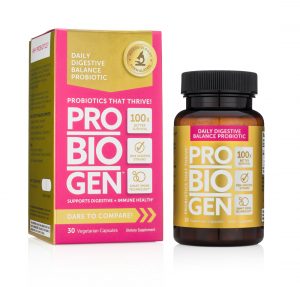
Strains in Probiogen DAILY DIGESTIVE BALANCE:
- Saccharomyces boulardii: Yeast probiotic typically used for supporting general digestive comfort and regularity.
- Bacillus coagulans HC™: A spore-forming probiotic, studied and supported by clinical research. Helps to Support Less Gas, Bloating & Discomfort.
- Bacillus clausii: A well-studied, spore-forming probiotic with high efficacy and excellent tolerability. B. clausii can colonize in the intestine in the presence of antibiotics. Helps support healthy immune system responses.
- Bacillus subtilis HU58™: A spore-forming probiotic with the ability to identify and support the decrease of harmful bacteria. This strain is known to produce Nattokinase, studied for its heart-healthy benefits. HU58™ also supports healthy immunity.
3) Improve the health of endogenous bacteria already living in the gut:
- Take SCFA like butyrate or eat foods to increase butyrate producing bacteria
- Prebiotic supplements including GOS, inulin and arabinogalactan
4) Diet
- Include large quantities of organically grown plants
- Eat fermented and probiotic living foods like kimchi, yogurt and sauerkraut
- Prebiotic fibers as found in radish, Jerusalem artichoke, jicama, garlic and onion. Take prebiotic supplements if FODMAPs are not tolerated such as Bimuno and Acacia Senegal
- Clean filtered water
- Grass-fed hormone free meats
- Wild, low mercury fish
- Healthy fats
5) Improve detoxification and inflammation
- Turmeric/curcumin
- Resveratrol
- Glutathione
- Milk thistle
- 1820 Clary Sage Omega 3 Oil
- GLA sources like borage oil and Evening Primrose Oil
Bone Broth for Healing the Gut

Bone broth is rich in minerals that support the immune system and contains healing compounds like collagen, glutamine, glycine and proline.
The collagen in bone broth heals your gut lining and reduces intestinal inflammation. In addition, collagen supports healthy skin and can reduce the appearance of cellulite. Also, the glycine in bone broth can detoxify your cells from chemicals and improve brain function.
You can drink bone broth as a drink or add it to soups and stews. Use it anytime you usually use stock or a stock cube. Whilst following the AIP you should try to consume bone broth daily to support your gut and immune system.
Revitalise includes my comprehensive 6 Week Autoimmune Protocol
Stewed Healing Apples for Gut Health
Research has shown the incredible anti-inflammatory effect of stewed apple on the gastro intestinal tract and health of the micro biome. Two stewed apples daily could induce the equivalent effect of 10-15mg of steroid anti-inflammatory control in inflammatory bowel disease (IBD) and this was due to the pectin content of the apples.
The original research study was carried out on mice that had induced colitis and when given the cooked apple experienced the healing effect on the lining of the gut.
Stewing apples helps to ‘pre digest’ the carbohydrate creating a viscous quality rich in pectin that mimics the healthy lining of the gut and has a protective role against inflammation.
For some people suffering with IBD the equivalent of 2 apples could be too much to begin with possibly inducing symptoms such as bloating and flatulence.
Apples are a high FODMAP food.
If you know that apples cause you these symptoms I suggest following the cooking instructions below and start by taking a teaspoon or two and gradually increasing the amount you can eat.
You could also add in some beneficial bacteria such as plain natural yogurt or a probiotic supplement to further support gut health.
Ingredients
First Stage:
- 6 Bramley apples or 8 eating apples
- 2 teaspoons cinnamon
- 1/2 cup or 1/2 mug raisins, sultanas or chopped dates
- 1/2 cup or 1/2 mug water
Optional Second Stage Ingredients:
- 1 tsp. of larch arabinogalactans stirred into the apple
- 1 Saccharomyces Boulardii 250mg capsule sprinkled on the top – or swallowed separately
- 1 mix of Bifidobacteria (mixed strains) (500mg) 5billion CFU sprinkled on top – or swallowed separately
- 1 x LGG sprinkled on top – or swallowed separately
- Organic coconut yogurt
- Add 6-8 blueberries
- 1 tsp. Manuka honey or raw honey
Method:
- Peel and core the apples and chop them into small pieces. Sprinkle over the cinnamon and toss to coat thoroughly.
- Put the apples, raisins, sultanas or dates and water into a saucepan and cover.
- Cook for about 15 minutes, stirring regularly. Cook until soft with rough shapes, no longer identifiable as apple slices. The colour should be a russet brown with the cinnamon effect.
- The apples may be eaten warm or cold. Store in the fridge or freeze in individual portions.
- Before serving add the second stage ingredients.
Additional Supplements to Help with the Autoimmune Protocol
-Vitamin D3
-Magnesium
-Cod Liver Oil
Lifestyle Recommendations for Autoimmune Disease
It’s vitally important that you don’t just change your diet and expect your symptoms to get better if you don’t address other areas of your lifestyle that are very likely impacting your health.
I have written about all of these things separately but here’s a short summary of other important lifestyle factors to consider.
- Heal Your Gut & Focus on Gut Health
As already mentioned in this article, poor gut health is at the root of many modern chronic diseases. Addressing your gut health is key. You need to remove inflammatory foods, focus on nutrient density, drink bone broth daily, eat prebiotic and probiotic foods and think about some targeted supplements that will support your digestion (HCl/enzymes/bile), and those that can help heal the gut lining.

- Sleep
After diet, sleep is probably the biggest factor (and is perhaps even more important than diet) that can help or hinder your healing progress. You need to aim for 8-9 hours sleep per night, you want to be in bed by 10pm to get the deeper and more restorative sleep, and avoid screens in the 2 hours before bedtime. Epsom salt & lavender essential oil baths before bed can aid the onset of sleep and sleep in a cool and very dark room.

- Stress Management
Stress has been shown to negatively impact the immune system. Try to add in some form of stress management to your weekly routine. Mindfulness, meditation, and yoga are perfect choices, but simply choose an activity that you enjoy and that genuinely reduces your stress levels. This could be reading, taking a bath or taking a daily walk out in nature.

- Sunlight
Not enough sun exposure may be just as harmful as too much. Some studies have suggested a link between vitamin D deficiency and autoimmune diseases such as Multiple Sclerosis. Evidence for benefit from sunlight is strong for other autoimmune diseases as well, such as type 1 diabetes. This possible link might also explain the increasing prevalence of autoimmune disease among those living far from the equator, where there are lower levels of winter sun. Try and get some natural sunlight each day. As well as allowing your body to produce vitamin D, it also helps to set your circadian rhythm for better sleep. If you have fair skin, aim for spending about half the amount of time in the sun that it takes for your skin to turn pink (without sunscreen) two to three days a week. This could be as little as 10 minutes for those with very fair skin. If you have dark skin, you may need up to two hours per day to generate the same amount of vitamin D (which is why supplementation may be necessary for those with darker skin). Never burn yourself in the sun.

- Movement
If you are suffering pain it can be difficult to stay active. But becoming completely inactive is one of the worst things to do. Try and walk daily if you can. My recommendation to everyone is to try and take a 20-30 minute daily walk, outside, in the most natural environment readily available to you. Taking your walk before midday also helps to set your circadian rhythm and can help with sleep. Yoga and Pilates are very effective yet gentle forms of exercise that can help with pain and inflammation as well as providing stress relief. Keep high intensity exercise to short bursts.
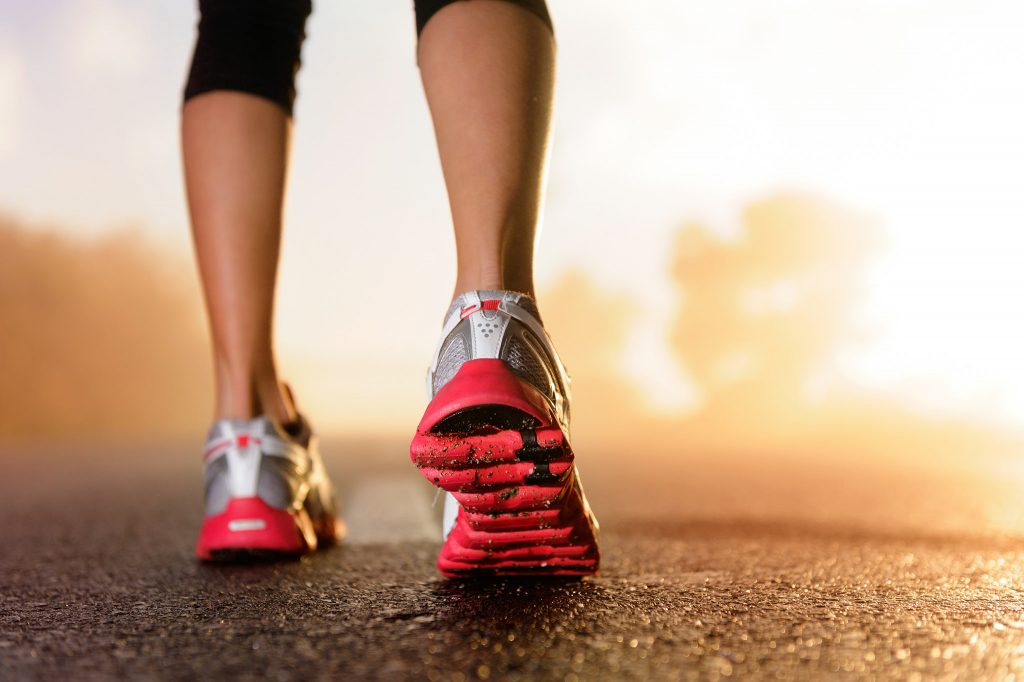
- Exposure to Chemicals
Last but not least – try to limit your exposure to toxic chemicals. Depending on your genetics you can be more or less susceptible to the effects of chemicals, but everyone is affected to some degree. Cleaning products are some of the worst offenders. After that it’s the pesticides and chemicals used on foods and the chemicals in our cosmetic and makeup products. Choose organic food and more natural alternatives to cleaning products and cosmetics. Fill your home with plants to help detoxify the air and invest in a good quality water filter. Saunas can also help – by sweating you can detoxify some of the chemicals in the body and many people find saunas a great form of stress relief too.
Autoimmune Protocol Reintroduction of Foods
The most important thing to remember is to be patient during the healing process. The autoimmune protocol cannot be rushed. One of the easiest mistakes that people make is the reintroduction of foods too early, simply because they have started to feel better.
You should follow the AIP for at least 30 days before you start to reintroduce foods, and some people may need to follow it for 90 days before they see real improvements. Reintroduce foods one at a time and leave 4 days between reintroductions so you can assess the impact the food is having.
Mistakes to Avoid When Starting the Autoimmune Protocol
Make sure you are focusing on nutrient density – you should be basing your diet on organ meats, good quality meat, fish and seafood and lots of organic vegetables.
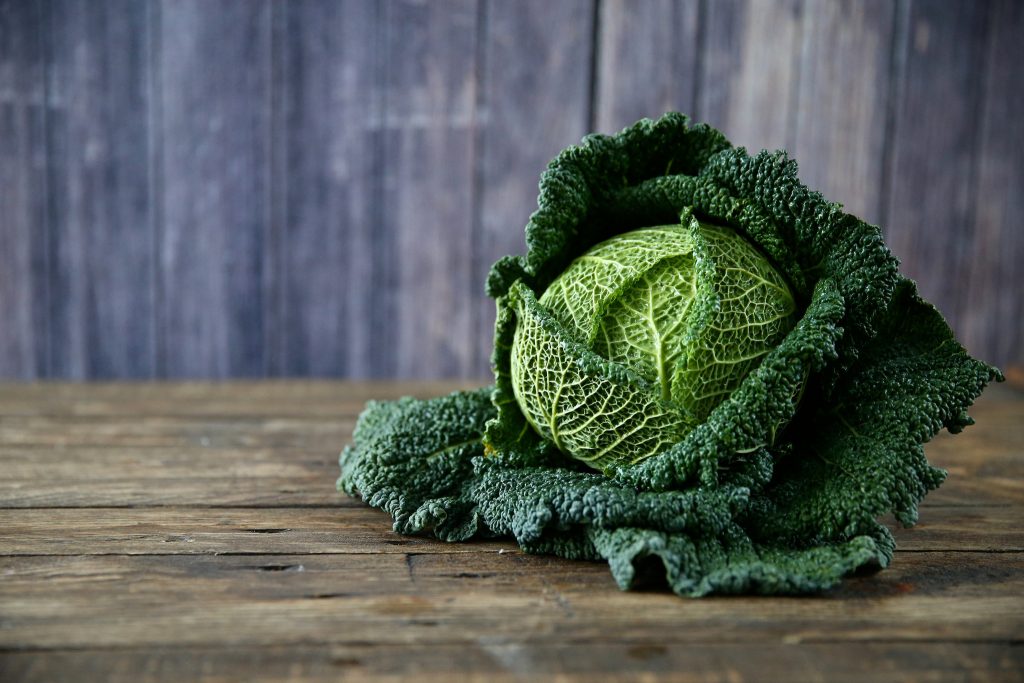
Healing will not happen if you are deficient in the micronutrients your body needs. Nutrient deficiencies are one of the largest causes of autoimmunity. Avoiding inflammatory foods is one side of the coin but you also need to really focus on adding in anti-inflammatory and nutrient dense foods.
Make sure you eat enough calories – it can be easy to under eat when you are following a restrictive diet. Aim for 3-4 meals per day and make sure each meal is large enough to take you through to the next meal without getting too hungry in between. Add a good dose of healthy fat to each meal and add MCT oil or coconut oil to hot drinks in between meals.
Eat a diverse range of foods – it’s easy to slip into a pattern of eating the same small range of “safe” foods. You should try to avoid this as it can lead to micronutrient deficiencies as well as food boredom!
You should structure your meal plan each week to include oily fish, white fish, seafood (prawns, mussels, scallops etc.), beef, lamb, chicken, pork, turkey and duck. Choose 20-30 different types of vegetables each week too – this is also very good for feeding your gut bacteria.
Eat fruit, but not too much – fruit is a good source of micronutrients and fibre but also contains natural sugar. It’s best to stick to two portions of fruit per day and choose those that are lower in sugar and higher in polyphenols like blueberries and raspberries.

Eating Out on The Autoimmune Protocol
Eating out while sticking to AIP really is tricky. The best solution is to go to either a fish and seafood restaurant where you will have a good selection to choose from, or go to a steak restaurant where you’ll be able to get a good steak and a green salad or some roasted chicken with vegetables.
Resources to Help You
The Paleo Approach is the first book ever to explain how to adapt the Paleo diet and lifestyle to bring about a full recovery. Read it to learn why foods marketed as ‘healthy’ – such as whole grains, soy and low-fat dairy – can contribute to the development of autoimmune conditions.
Discover what you can eat to calm your immune system, reduce inflammation and help your body heal itself. Find out which simple lifestyle changes – along with changes in diet – will make the biggest difference for your health.
In The Autoimmune Wellness Handbook, authors Mickey Trescott and Angie Alt, the trusted names behind Autoimmune-Paleo.com and authors of The Autoimmune Paleo Cookbook and The Alternative Autoimmune Cookbook, respectively, provide the comprehensive guide to living health fully with autoimmune disease. While conventional medicine is limited to medication oreven surgical fixes, Trescott and Alt introduce a complementary solution that focuses on seven key steps to recovery: inform, collaborate, nourish, rest, breathe, move, and connect.
The steps are divided into user-friendly chapters that demystify the process and lead readers to optimum healing. With five autoimmune conditions between them, Trescott and Alt have achieved astounding results using the premises they’ve laid out in thebook. The Autoimmune Wellness Handbook goes well beyond nutrition and provides the missing link that the chronic illness community is desperately seeking so that they can get back to living a vibrant, healthy life.
In The Autoimmune Paleo Cookbook, Mickey Trescott provides a resource for those looking to embark on the Autoimmune Protocol – a version of an ancestral diet that is focused both on removing potential food triggers as well as healing the gut. Research shows there is a clear connection between diet and autoimmune disease, and many, including the author, have used these principles to heal their bodies from these debilitating conditions and their accompanying symptoms.
With the information and recipes in this book, you can embark on this process for yourself–without suffering through bland and tasteless “allergen-free” meals. Instead, with all of the incredible food you will be enjoying, you may forget that you are achieving better wellness!
In the first section of the book, you will learn all about the Autoimmune Protocol – what it is, why it works, and which foods you should eat and avoid while on the elimination diet. Instructions are given on how to clear your pantry of questionable ingredients and replace them with healing, nutrient-dense whole foods. Also included are sections on food quality, a shopping guide, tips and tricks to make the protocol go more smoothly, as well as ideas for batch-cooking and breakfast. Mickey provides two, 4-week meal plans, each of them corresponding with recipes from the book and featuring detailed shopping lists. Armed with this information, anyone can integrate the Autoimmune Protocol in to their routine!
In addition to the introductory material, The Autoimmune Paleo Cookbook includes 112 delicious recipes suitable for anyone on the strictest phase of the Autoimmune Protocol – no grains, beans, dairy, eggs, nuts, seeds, or nightshades. Although this is quite the list of exclusions, Mickey offers unique, flavorful, and delicious meals suitable for a variety of occasions and preferences. You will find simple recipes that anyone can make for a weeknight dinner, as well as more elaborate preparations for those who want to enjoy with company or for a special occasion. Full-page photos for every recipe show you what to expect and inspire you to create beautiful meals of your own.
With The Autoimmune Paleo Cookbook as your guide, you’ll be inspired to take your health into your own hands – finding better health in the face of autoimmunity, while thoroughly enjoying every last bite!
Revitalise includes my comprehensive 6 Week Autoimmune Protocol
Work With Me
If you are suffering from autoimmune disease and would like advice or support to help you implement the Autoimmune Protocol I am available for nutritional therapy consultations. Read more on my Work With Me page or email me chloe@chloearchard.com.
This following is a guest post written by Jo Romero who blogs at Comfort Bites Blog, celebrating good, comforting food, whatever your diet or lifestyle.
Thinking of Starting the Autoimmune Protocol? Here’s what to expect…
When people start paleo, it can sometimes take them a little while to adjust, especially if their diet previously consisted of lots of pasta, chips and pizza. You might think: “Crikey, what the heck am I going to eat without grains and dairy?”. It all seems very restrictive. And then you find out about the Autoimmune Protocol.
The Autoimmune Protocol (AIP) is a lifestyle plan designed for people with chronic autoimmune conditions. It’s based on the paleo diet but further eliminates any food thought to stimulate the immune system. Sarah Ballantyne, who has written two books on AIP and blogs at The Paleo Mom describes it as “very simply an extremely nutrient-dense diet that is devoid of foods that irritate the gut, cause gut dysbiosis and activate the immune system.”
Sounds great, right? The only problem is that here in Britain, the NHS website waves off the concept of a ‘leaky gut’as “vague and largely unproven”. But it is hard to ignore the ever-growing collection of success stories – of people who say they’ve sent conditions like multiple sclerosis, rheumatoid arthritis, psoriasis and ulcerative colitis into remission using the AIP diet and lifestyle. If you suffer from an autoimmune condition and have thought about starting AIP, here are some tips before you start…
- It’s paleo, but with a lot more taken out
As well as no grains, dairy, processed foods and legumes, there’s a lot more you’ll be cutting out of your diet, at least for a little while. Any food that’s considered to have the ability to trigger the immune system into action is eliminated in the first stages of the diet – so that’s nuts, eggs, seeds (including seed-based spices) and nightshades (vegetables or spices). Sugar, even in its natural form – in fresh and dried fruit – is also restricted, but not cut out completely. - But it’s not for forever
Good news. The elimination phase of the diet isn’t meant to last for ages. Sarah Ballantyne recommends that you eliminate these foods until you see an improvement in your autoimmune symptoms and then start reintroducing them back in, one by one. This is important for good nutrition, as well as helping you to gauge whether any of them are personal triggers for you. Most people do the elimination stage for about 30 days before bringing foods back in. - Work alongside your doctor
Even though you’re starting a healing diet, you should still continue to manage your health with your doctor. If you’re on medication to manage your symptoms, don’t just stop taking it. And, because AIP eliminates quite a few food groups, it’s definitely a good idea to have a chat with your doc before you start. - You CAN eat dessert. Occasionally.
So, while there are no nuts, eggs or seeds on AIP, you can still make a lovely pudding for a special occasion. AIP bloggers are coming up with new and creative recipes all the time, like ice creams, panna cotta or trifle. Just remember that natural sources of sugar like maple syrup and honey are still sugar at the end of the day, and just because it’s AIP-compliant, it doesn’t mean you can schnaffle up the whole thing. Even if you want to. - You (probably) won’t see a difference overnight
I started AIP to try and heal my psoriasis, which covered my entire scalp, elbows, knees and parts of my chest for 25 years. One year later, and I’m sitting here, with one patch the size of a 1p left, on the back of my neck. On AIP, I felt better after a couple of days. But it took me about eight months before I saw any real difference in my psoriasis. Be patient and keep eating nutrient-dense foods and getting lots of rest. Which brings me on to… - It’s not all about diet
As with the standard paleo lifestyle, it’s not just about what you eat. Getting daily exercise, quality sleep, fresh air and reducing your stress levels are hugely important. Studies have shown that yoga can be good for a healthy immune system, and it’s worked wonders for me. You could have the most nutrient-dense diet there is, but if you’re constantly worried and anxious, you could still experience flare-ups.
Jo Romero blogs at Comfort Bites Blog, which celebrates good, comforting food, whatever your diet or lifestyle. Visit Jo’s AIP Recipe Roundup for AIP-compliant recipes, and find out more about Jo’s battle with psoriasis. For further information on the Autoimmune Protocol, and the science behind it, the best place to start is the The Paleo Mom.
Follow Jo on Facebook: https://www.facebook.com/comfortbitesblog
Twitter: https://twitter.com/joromerofood
Disclaimer: www.paleo-britain.co.uk is a participant in the Amazon EU Associates Programme, an affiliate advertising programme designed to provide a means for sites to earn advertising fees by advertising and linking to Amazon.co.uk. Buying through our affiliate links does not cost you anything but helps us keep this website up and running. Thank you!
All information provided within this blog post is for informational purposes only, and is not to be construed as medical advice or instruction. Please consult your GP or a qualified health professional on any matters regarding your health and wellbeing or on any opinions expressed within this blog post. The information provided in this blog post is believed to be accurate based on the best judgment of the author. However, you as the reader must be responsible for consulting with your own GP or other health professional on matters raised within. Paleo Britain will not accept responsibility for the actions or consequential results of any action taken by any reader.
The material in this blog post may include information, products or services by third parties. Third Party Materials comprise of the products and opinions expressed by their owners. As such, Paleo Britain does not assume responsibility or liability for any Third Party material or opinions. The publication of such Third Party Materials does not constitute our guarantee of any information, instruction, opinion, products or services contained within the Third Party Material. Publication of such Third Party Material is simply a recommendation and an expression of our own opinion of that material.
Revitalise includes my comprehensive 6 Week Autoimmune Protocol
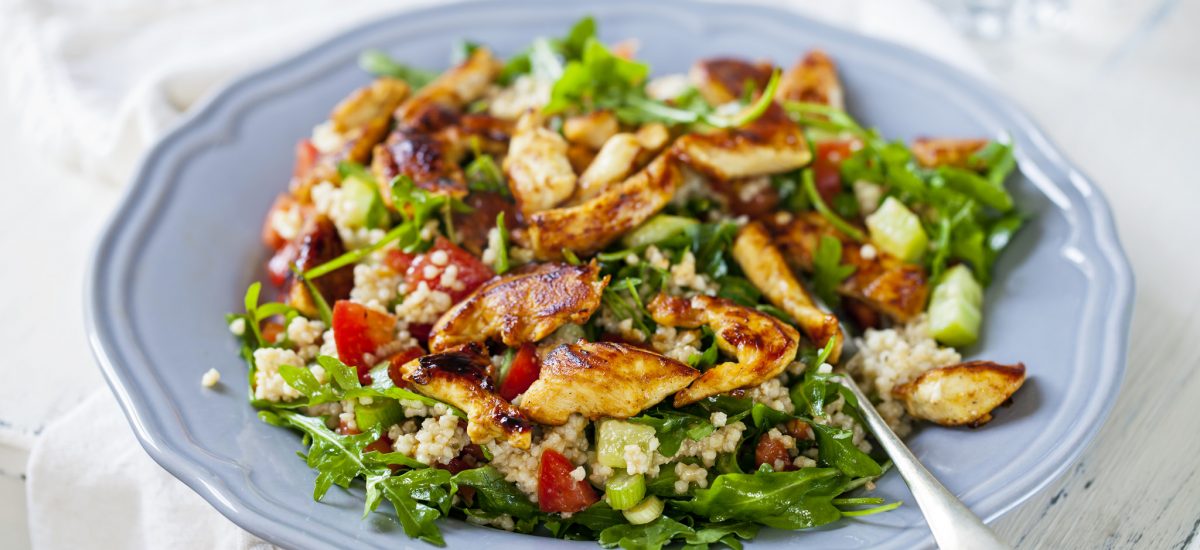
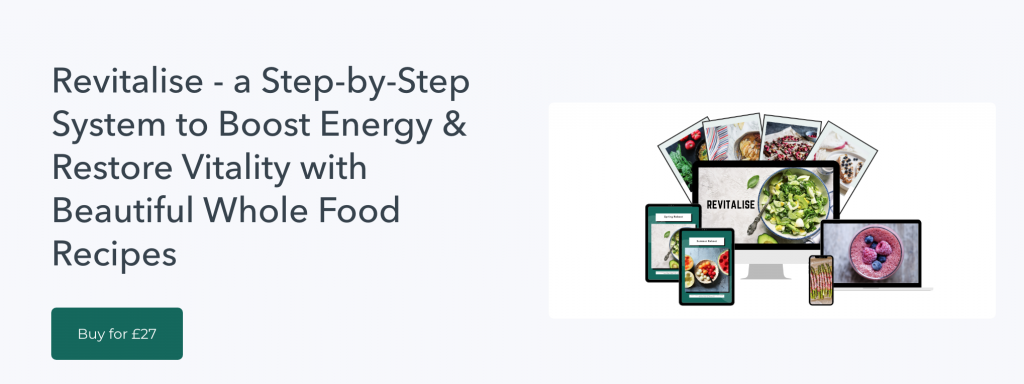


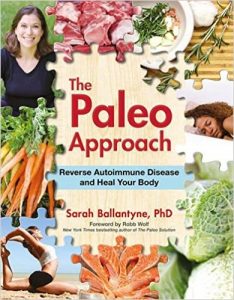
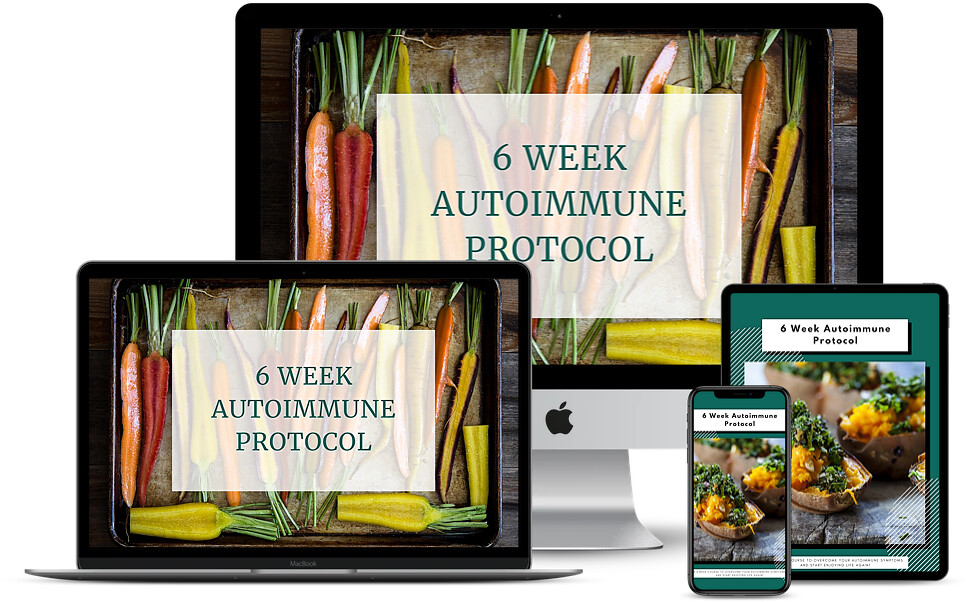

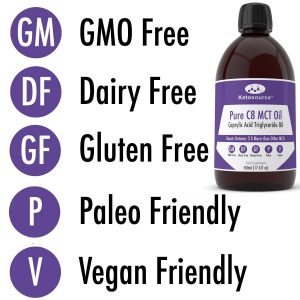
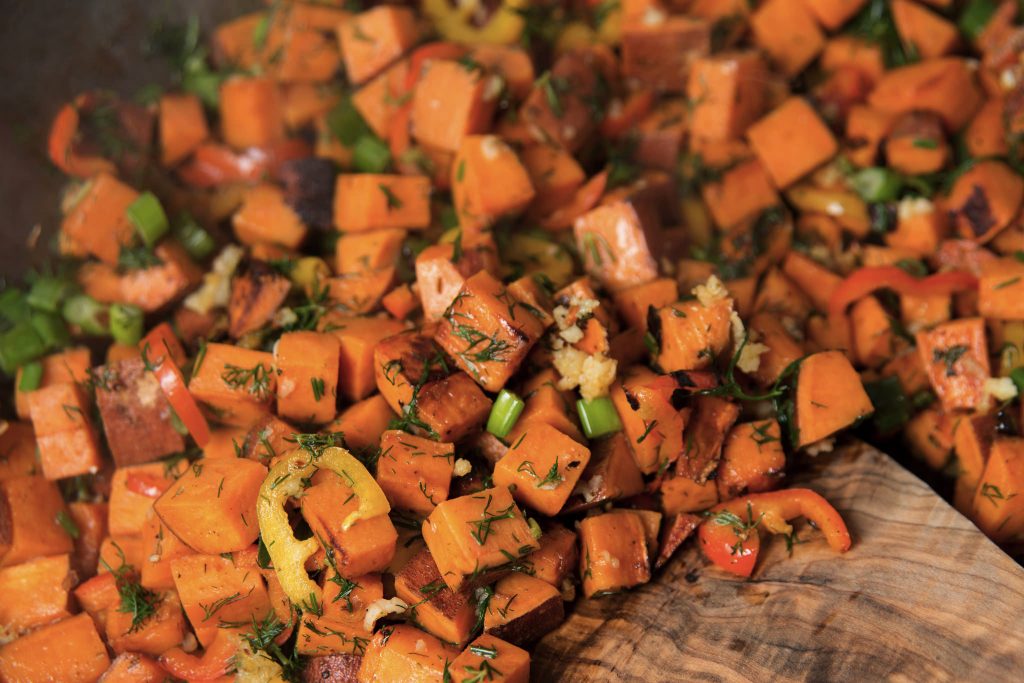
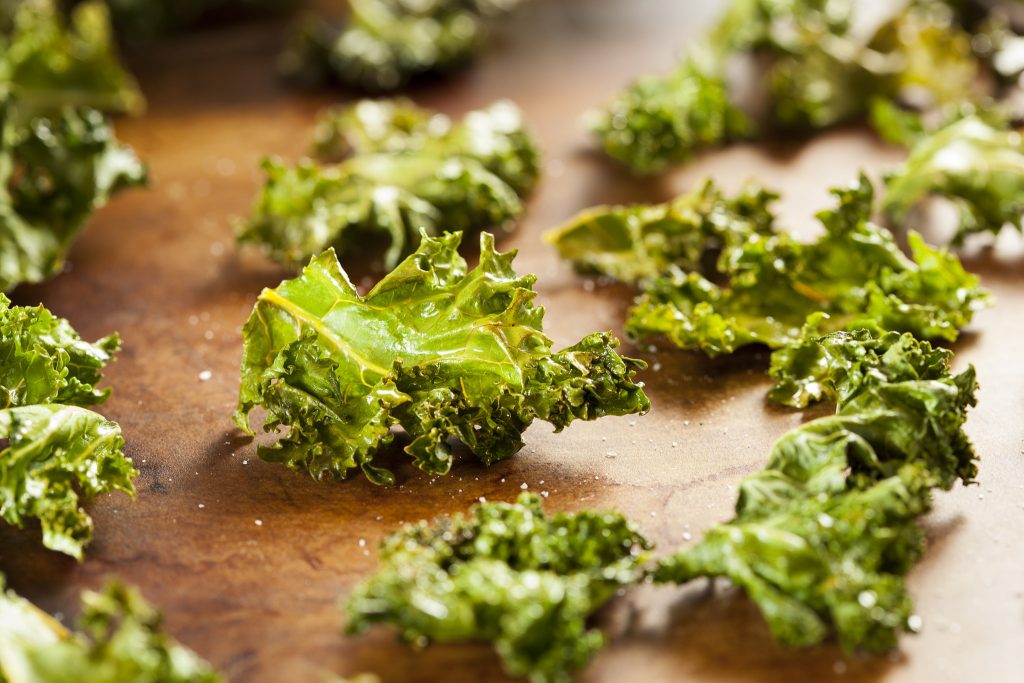

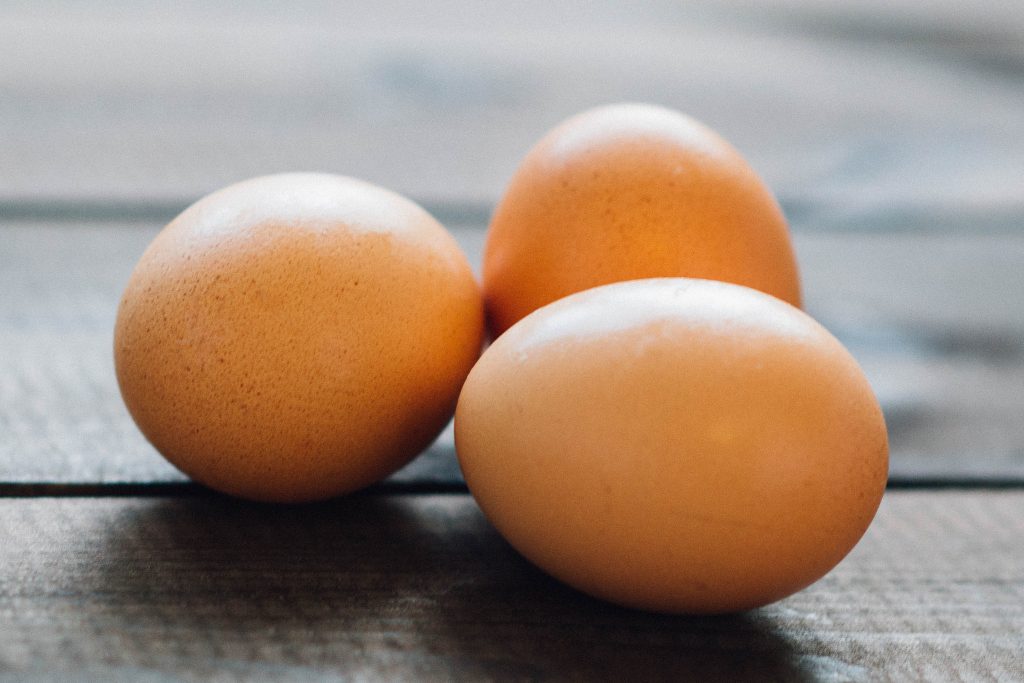
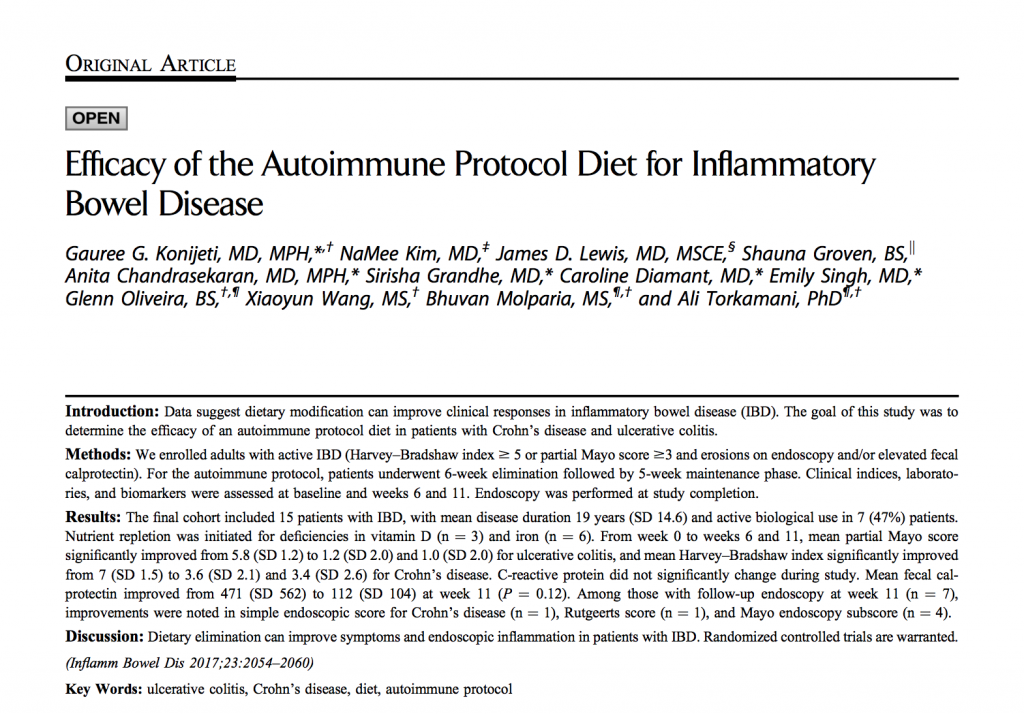

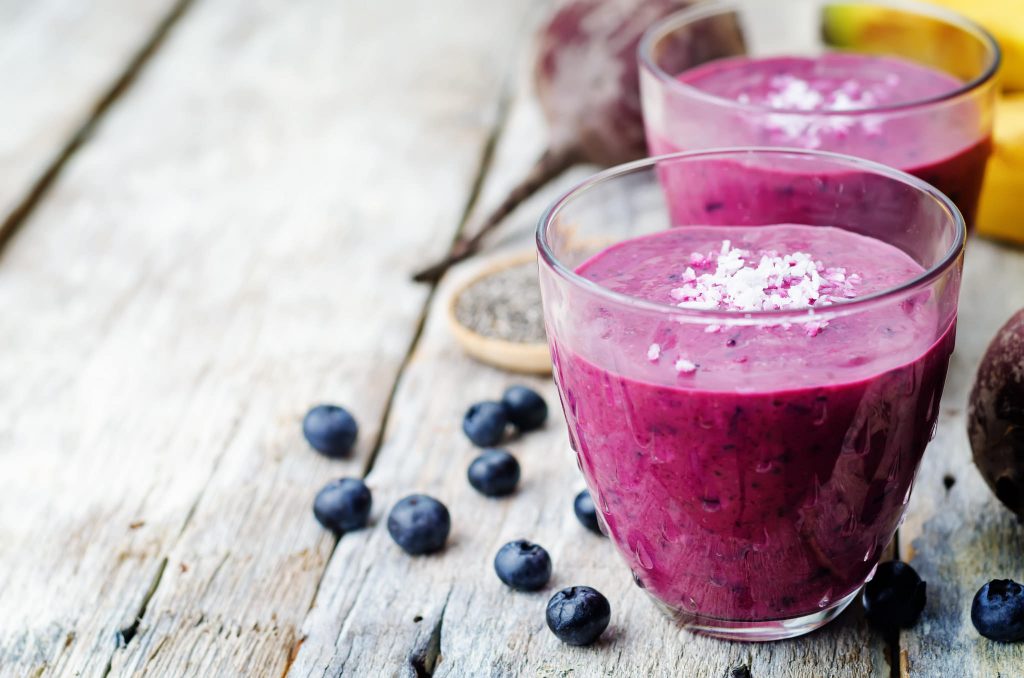

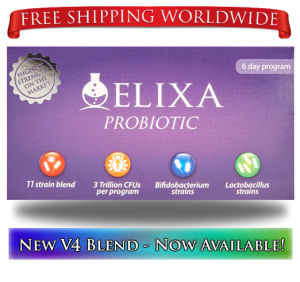




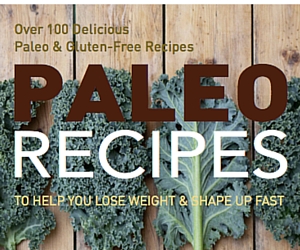
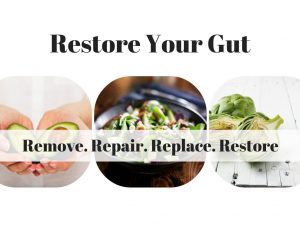
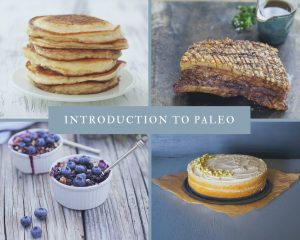
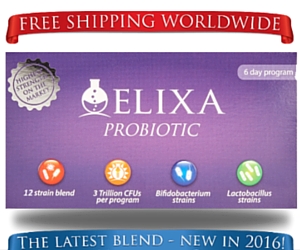
You must be logged in to post a comment.